Understanding Niji AI Art: A New Era in Digital Art Creation
In recent years, artificial intelligence has revolutionized numerous fields, including the world of digital art. Niji AI Art is one of the standout technologies leading this transformation. This cutting-edge system combines the power of machine learning algorithms with artistic creativity to generate visually stunning artwork. Niji AI Art enables creators to produce high-quality art with just a few inputs, making it a powerful tool for both seasoned artists and beginners.
Niji AI Art is not just a tool; it represents a significant shift in how we think about creativity and artistic expression. Traditional art creation often requires years of practice, technical skill, and personal effort, but Niji AI Art shortens this learning curve by automating complex processes and delivering impressive results in a fraction of the time.
What is Niji AI Art?
Niji AI Art is a state-of-the-art artificial intelligence system designed to generate art based on a user’s input. Using complex algorithms, Niji AI can take prompts such as a simple description or a rough sketch and turn them into polished, professional-looking artworks. The technology uses deep learning models that have been trained on vast datasets of various art styles, allowing it to mimic everything from traditional painting techniques to modern digital art forms.
One of the key features of Niji AI Art is its ability to understand artistic concepts like composition, color theory, and texture. This gives it the capability to produce visually appealing pieces that feel natural and cohesive, even when created entirely by an AI. Whether you are looking to create digital illustrations, concept art, or abstract designs, Niji AI Art can accommodate a wide range of artistic needs.
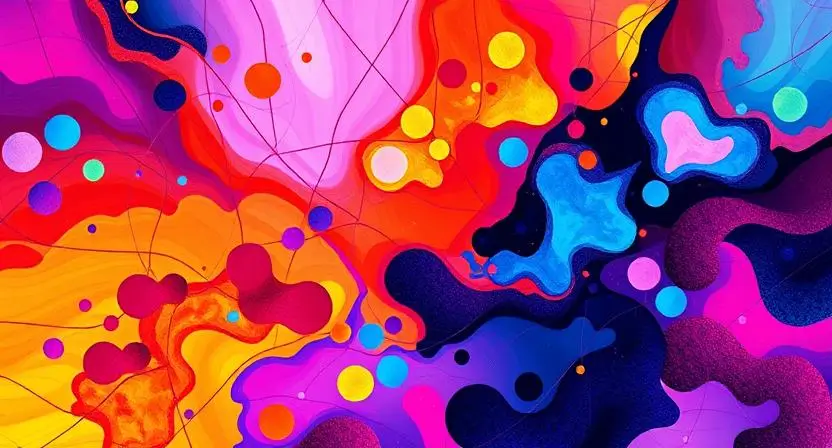
A Breakdown of Niji AI’s Technology
At the heart of Niji AI Art lies its advanced machine learning technology. The system utilizes a variety of deep learning techniques such as Generative Adversarial Networks (GANs) and neural networks. These techniques allow the AI to generate highly detailed and realistic art based on specific input data.
Niji AI’s neural network is trained using a massive dataset of images, ranging from traditional artwork to modern digital illustrations. Through this training process, the AI learns to recognize patterns, styles, and nuances in art. It then applies these learned patterns to create new pieces, making it capable of mimicking various artistic genres, including abstract, surrealism, realism, and more.
Another aspect of Niji AI’s technology is its natural language processing (NLP) capability. This allows users to provide text-based prompts that guide the AI’s creative process. For example, a user could input a description like “a serene landscape at sunset,” and Niji AI would generate an image that matches the description.

Key Features of Niji AI Art Tools
Niji AI Art offers several key features that set it apart from other AI art tools. These features enhance the creative process, making it easier for users to generate art that aligns with their vision.
User-Friendly Interface: Niji AI Art is designed with ease of use in mind. Even those with no prior art experience can quickly get started by inputting simple text descriptions. The interface is intuitive and guides users step-by-step through the creation process.
Multiple Art Styles: Niji AI Art supports various artistic styles, from realistic portraiture to stylized illustrations and abstract designs. Users can specify the style they want, or let the AI choose based on their inputs.
High Customization: The system allows for detailed customization, giving users control over aspects like color palettes, brush strokes, and texture quality. This level of customization ensures that each artwork generated is unique and tailored to the user’s preferences.
Fast Rendering: One of the standout features of Niji AI Art is its speed. Despite the complex algorithms involved, the system can generate high-quality art in a matter of minutes, significantly reducing the time and effort traditionally required in art creation.
Collaboration Capabilities: Niji AI Art also offers collaboration features, enabling artists to work together on projects. Multiple users can contribute prompts or feedback, making it a great tool for group creative efforts.

How Niji AI Art Transforms the Creative Process
Niji AI Art is not just a tool for generating digital art; it is a groundbreaking advancement that has significantly transformed how artists approach the creative process. With traditional methods of creating art, artists must invest time in perfecting their skills, experimenting with different techniques, and meticulously refining their works. Niji AI Art, on the other hand, accelerates this process by providing powerful tools that automate many aspects of art creation while maintaining a high level of quality and creativity.
Niji AI Art allows creators to break free from the limitations of traditional art-making processes. By using AI to assist in the conceptualization and execution of art, artists can focus on the broader vision of their work without getting bogged down in the technical details. This revolutionary approach has opened up new possibilities for creative expression and innovation, leading to entirely new forms of digital artwork.
Benefits of Using Niji AI in Art Creation
The benefits of using Niji AI in art creation are vast and varied, making it a valuable tool for both amateur and professional artists. Here are some key advantages:
Speed and Efficiency: One of the most significant benefits of Niji AI Art is the speed with which it produces results. What might take a traditional artist hours or even days to complete can be generated in a matter of minutes with Niji AI. This not only saves time but also allows artists to produce more work in a shorter period.
Accessibility for Non-Artists: Niji AI Art levels the playing field by allowing those with little or no artistic training to create stunning artwork. By simply providing a description or concept, anyone can use Niji AI Art to generate high-quality designs, illustrations, and more.
Endless Creative Possibilities: Niji AI can mimic virtually any art style, from hyper-realistic portraits to abstract designs. Artists can experiment with various techniques, textures, and color palettes without the need for physical materials. This freedom encourages greater experimentation and creativity.
Customization and Control: While Niji AI generates art, it also offers users the ability to customize the output. Artists can adjust various elements, such as color schemes, compositions, and brushstroke styles, to align with their unique vision.
Collaboration Opportunities: Niji AI Art fosters collaboration between human artists and AI, combining the strengths of both. Artists can work alongside the AI, refining and editing the generated artwork, which leads to a more efficient and collaborative creative process.

Real-World Applications of Niji AI Art in Different Industries
Niji AI Art is not confined to digital art creation alone; its applications are wide-reaching across various industries. From advertising to entertainment, this AI technology is making waves in a multitude of creative sectors.
Niji AI for Graphic Designers
Graphic designers are among the first to benefit from the power of Niji AI Art. The software allows designers to create high-quality designs for websites, social media, marketing materials, and more with minimal effort. With the ability to generate custom logos, illustrations, and visual concepts based on simple text prompts, designers can drastically reduce the time spent on brainstorming and rough drafts.
Furthermore, Niji AI can generate variations of designs based on a single prompt, providing designers with multiple options to choose from. This greatly enhances creativity and ensures that designers can explore a variety of styles without needing to start from scratch each time.
In addition to streamlining the design process, Niji AI also ensures consistency in brand visuals by adhering to predefined design styles and themes, making it easier for designers to maintain a cohesive brand identity.

Niji AI in the Entertainment Industry
The entertainment industry has also seen a significant impact from Niji AI Art. Whether it’s for concept art in films, video games, or animation, Niji AI can generate high-quality visual elements that align with a director’s or game designer’s vision.
For video game developers, Niji AI can help quickly generate environments, characters, and assets, accelerating the game development process. It can also be used in the pre-production phase of films and animations, helping directors and designers visualize scenes and characters before full-scale production begins.
Moreover, Niji AI Art is now being used in the creation of promotional materials for entertainment projects. Posters, banners, and social media content can be generated using Niji AI to create visually appealing marketing materials in a fraction of the time it would take to design them manually.
As AI technology continues to evolve, we can expect even more sophisticated applications in the entertainment industry, enabling faster and more cost-effective production cycles.
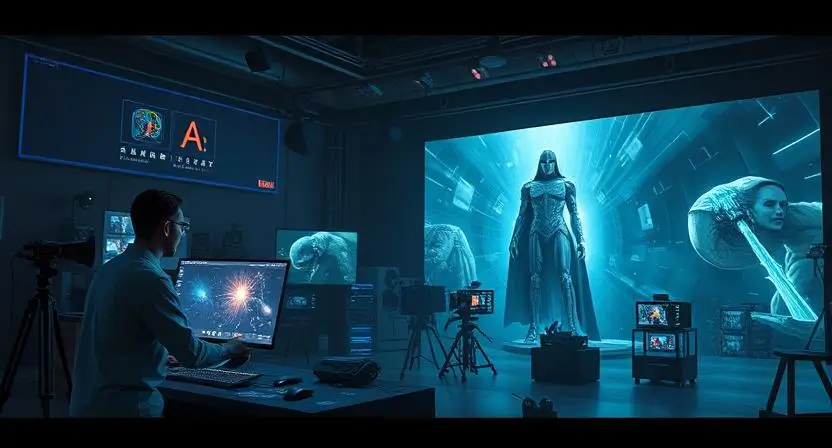
Niji AI Art vs. Traditional Art: Which is Better?
The debate between AI-generated art and traditional art forms has been growing in popularity as technologies like Niji AI Art continue to advance. For decades, artists have relied on their skills, techniques, and personal touch to create art that resonates emotionally and visually with viewers. With the advent of Niji AI Art, however, many are questioning whether AI can truly match, or even surpass, the results achieved by human artists using traditional methods.
In this section, we will compare Niji AI Art with handcrafted traditional art, exploring both the strengths and limitations of each. Understanding the unique capabilities of AI and human art can help individuals determine which method suits their creative goals and needs.
Comparison of AI-Generated Art vs. Handcrafted Art
AI-generated art and handcrafted art both have distinct advantages and characteristics. Let’s compare the two to understand the differences:
Creativity and Conceptualization:
- Niji AI Art: Niji AI Art can generate visually stunning artwork based on user input, including text prompts or rough sketches. The AI excels at mimicking different styles and combining artistic elements seamlessly. However, its creativity is based on pre-existing data and patterns, meaning it can’t conceptualize entirely new ideas on its own. The AI’s creative process relies on algorithms that analyze and generate based on previous data.
- Traditional Art: Traditional artists bring a unique personal touch and creativity to their work, guided by experience, emotions, and the exploration of new ideas. A human artist can conceptualize entirely original work and express personal experiences, which often leads to artwork with deeper emotional resonance and storytelling.
Speed and Efficiency:
- Niji AI Art: Niji AI can create intricate artworks in a fraction of the time it would take a human artist. This makes it an incredibly efficient tool for artists who need to produce large volumes of art quickly or those working on tight deadlines. However, while speed is an advantage, it may lack the deep connection and nuance that comes with the human touch.
- Traditional Art: Traditional art takes more time to execute, especially if the artist is working with mediums like oil paints, watercolors, or sculptures. While the process can be time-consuming, this slow and deliberate approach often results in highly refined and personal artwork.
Customization and Flexibility:
- Niji AI Art: Niji AI offers the ability to customize output in real-time, such as adjusting color palettes, texture, and artistic styles. Users can experiment with multiple variations without having to start over from scratch. This flexibility allows artists to explore numerous creative possibilities quickly.
- Traditional Art: Traditional artists have full control over their medium but lack the same level of flexibility that AI offers. While an artist can change techniques and materials during the creative process, they often cannot instantly switch styles or elements in the way AI tools can.

The Role of AI in Artistic Expression
The role of artificial intelligence in art is a topic that sparks ongoing debate. While AI-generated art is impressive in its ability to mimic traditional styles and create entirely new visual experiences, it lacks the fundamental human experience and expression that drives traditional art.
AI as a Tool for Exploration: Niji AI Art, like other AI tools, is an extension of an artist’s creative process. Instead of replacing human creativity, it amplifies it by offering new ways to visualize concepts. Artists can use AI as a collaborator, prompting the AI with initial ideas or concepts and refining the results to match their vision. This makes Niji AI Art a valuable tool for artists seeking to explore new techniques, styles, and directions they may not have considered on their own.
AI as a Creator: While AI can generate remarkable works, some critics argue that it cannot create with true emotional depth or understanding. Traditional art is inherently linked to the artist’s journey, personal emotions, and experiences. AI, on the other hand, operates on patterns and data, lacking the lived experiences that typically inform traditional art.
That being said, AI can introduce new forms of expression and can generate art that challenges traditional boundaries. It serves as a bridge between technology and artistic expression, expanding the possibilities of what is considered “art” in today’s digital age.
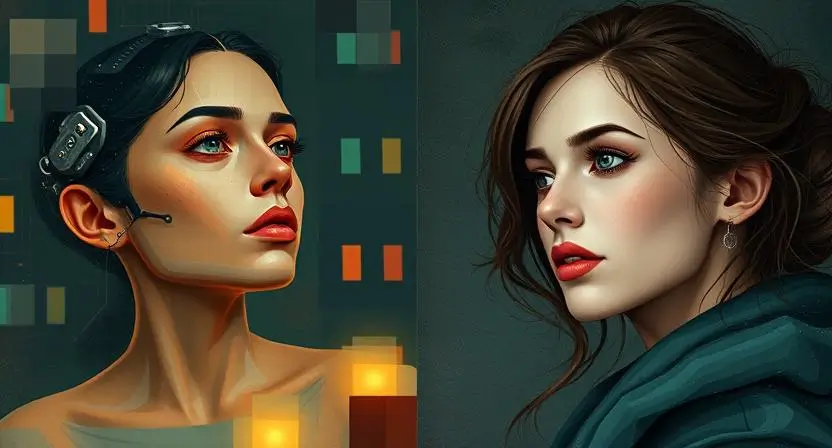
How Niji AI Enhances Artistic Techniques
Niji AI Art doesn’t simply mimic traditional techniques but can enhance them by providing artists with tools to refine their work and push boundaries. Here are a few ways Niji AI enhances artistic techniques:
Fine-Tuning Details: Niji AI allows users to adjust intricate details such as lighting, shadow, and texture, which are often challenging to perfect manually. By automating certain aspects of these details, Niji AI frees up the artist to focus on other elements, like composition and color theory.
Creating New Art Styles: Traditional artists typically work within their preferred art styles or medium. Niji AI, however, allows for the combination of different styles in a single piece. Artists can merge elements of surrealism, impressionism, and realism, for example, to create something entirely unique.
Enhancing Speed without Sacrificing Quality: In traditional art, refining details often takes a considerable amount of time. Niji AI speeds up this process by offering suggestions and generating multiple variations, helping artists explore different possibilities quickly.
Collaboration with AI: Artists are increasingly collaborating with AI tools to refine their techniques and generate new ideas. Niji AI serves as a source of inspiration and a technical assistant, enabling artists to focus more on ideation and less on technical execution.
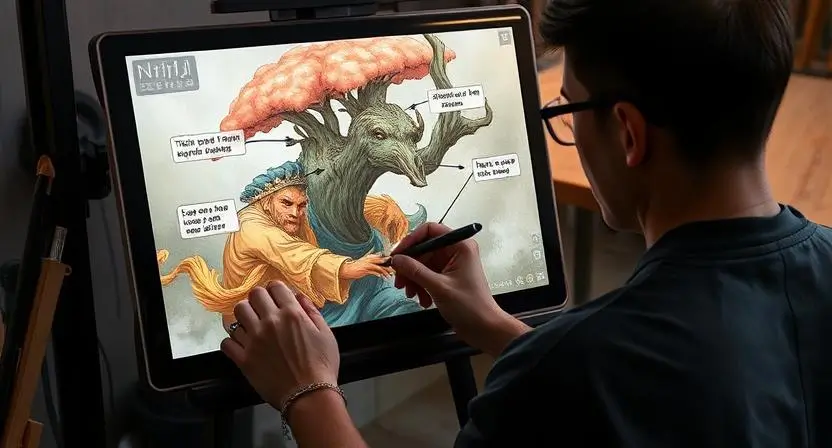
Getting Started with Niji AI Art: Tools and Platforms
Niji AI Art has opened new doors for both professional and amateur artists, enabling them to create stunning, AI-generated artworks quickly and efficiently. Whether you’re a beginner looking to dive into the world of digital art or a seasoned artist seeking to explore the potential of AI in your creative process, understanding the tools and platforms available is essential to getting the most out of Niji AI.
This section will guide you through the popular platforms for creating Niji AI Art, provide tips for beginners, and offer practical advice to help you achieve the best results with these advanced tools.
Popular Platforms for Niji AI Art Creation
Several platforms have integrated Niji AI Art technology, allowing artists to harness the power of AI in their creative endeavors. These platforms offer a variety of features, from customizable settings to pre-designed templates, giving users the flexibility to create unique art with ease. Some of the most popular platforms for Niji AI Art creation include:
DeepArt.io:
DeepArt.io is a widely used platform for generating art using AI. With a focus on transforming photos into masterpieces in the style of famous artists or specific genres, Niji AI is integrated into this tool to enhance the artistic effect. This platform allows you to upload your image and experiment with various artistic styles, providing an intuitive interface for beginners and professionals alike.Artbreeder:
Artbreeder is another popular platform that uses AI to allow users to create and modify art through blending images. While it focuses heavily on portraits, landscapes, and characters, the integration of Niji AI Art allows for incredibly detailed and unique results. Artists can control aspects such as colors, lighting, and textures to achieve the desired output.Runway ML:
Runway ML offers an accessible and powerful AI-powered creative tool that integrates with Niji AI. It supports everything from video editing to art creation. Runway ML offers users the ability to experiment with Niji AI Art tools in real-time, enabling beginners to understand AI art creation in a hands-on way.DALL·E 2:
DALL·E 2, an AI image generation tool by OpenAI, is widely popular for creating detailed, high-quality images from text prompts. While not exclusive to Niji AI, it utilizes similar technology to generate artwork. Its versatility in text-to-image generation makes it a useful platform for creating unique art that combines AI’s power with user creativity.

How to Use Niji AI Art Tools for Beginners
If you’re new to Niji AI Art, it may seem overwhelming at first. However, with the right guidance, beginners can quickly start creating impressive artwork. Here’s a step-by-step guide to help you get started:
Choose the Right Platform:
Start by selecting the platform that best suits your needs. Platforms like DeepArt.io and Artbreeder offer beginner-friendly interfaces, while Runway ML and DALL·E 2 provide more advanced features for those looking to experiment further.Upload Your Image or Create a Prompt:
Once you’ve selected a platform, you will either upload an image (if the platform supports image transformation) or enter a text prompt that describes what you want the AI to create. For instance, if you’re using a text-to-image generator, be specific in your description to help the AI produce the most accurate artwork possible.Customize and Adjust Settings:
Many Niji AI Art platforms allow for customization, so adjust settings like style, color scheme, and texture to match your vision. Some platforms also offer predefined styles such as “Impressionist,” “Surrealist,” or “Abstract,” which you can apply to your creation.Generate and Refine:
After adjusting your settings and preferences, hit the “Generate” button to let the AI do its work. Depending on the platform, you may get multiple variations, which you can further refine by modifying the prompts or settings.Save and Download:
Once you’re happy with the results, you can save or download the artwork. Some platforms also offer high-resolution downloads for printing or professional use.

Tips for Achieving the Best Results with Niji AI Art
To maximize your creative potential and get the best results from Niji AI Art, here are some useful tips that can enhance your artwork and help you navigate the tools more effectively:
Be Specific in Your Prompts:
The more specific your prompt, the more accurate the results. For example, instead of asking the AI to generate “a landscape,” specify “a sunset over a mountain range with a river flowing through the valley.” Detailed prompts help guide the AI to produce results closer to what you envision.Experiment with Multiple Variations:
Don’t settle for the first result. Most platforms will generate several variations of the same prompt. Try exploring these variations to find the one that best fits your vision.Use Reference Images for Inspiration:
If you’re using an image-to-image generator, provide clear and high-quality reference images. The AI will work best when it has a strong visual base to build upon. Make sure the reference images align with the style you want to achieve.Refine and Layer:
Once the AI has generated the artwork, don’t hesitate to refine and layer additional prompts or adjustments. Many platforms allow you to enhance your artwork by adding textures, adjusting lighting, or changing colors.Stay Open to Experimentation:
One of the exciting aspects of Niji AI Art is its ability to generate new and unexpected results. Don’t be afraid to experiment with different styles, themes, or combinations to create something truly unique.

The Future of Niji AI Art: What’s Next?
Niji AI Art has made significant strides in recent years, transforming the way digital art is created and consumed. As technology continues to advance, AI-generated art is poised to play an even larger role in the creative industries. The future of Niji AI Art promises exciting possibilities, from more sophisticated AI models to integration with emerging technologies like augmented reality (AR) and virtual reality (VR). In this section, we will explore predictions for the evolution of AI art, how Niji AI will influence digital art markets, and the emerging trends in AI-powered art creation.
Predictions for the Evolution of AI Art
The evolution of AI art is happening rapidly, and with continuous advancements in machine learning and neural networks, the next few years will bring significant changes in the art landscape. Here are some key predictions for the future of AI art:
Increased Realism and Complexity:
As AI algorithms continue to improve, we can expect even more realistic and complex AI-generated art. Niji AI, already known for its ability to generate highly detailed images, will likely evolve to create even more intricate and lifelike designs, blurring the lines between human-created and AI-generated art.Integration with Augmented and Virtual Reality:
In the future, Niji AI may integrate with augmented reality (AR) and virtual reality (VR) platforms, allowing artists to create and manipulate 3D AI art in real-time. This shift would enable artists to interact with their creations in immersive environments, providing new ways to experience and display AI-generated art.AI as a Collaborative Partner:
Rather than being a tool for simply generating art, future AI systems like Niji AI may serve as true creative collaborators. Artists will be able to input their ideas and concepts, and the AI will contribute to the creation process by suggesting color schemes, composition adjustments, and stylistic changes, resulting in a more dynamic, co-creative process.Better Personalization:
Future iterations of Niji AI may be able to create art that is more personalized to individual preferences. By analyzing user data and understanding artistic tastes, the AI could generate custom artwork tailored to specific moods, events, or individual artistic styles.

How Niji AI Will Influence Digital Art Markets
The impact of Niji AI on the digital art market will likely be profound. AI-generated art is already making waves in the art world, and its influence will only grow in the coming years. Here’s how Niji AI could shape the future of the digital art marketplace:
Lower Barriers to Entry:
One of the most significant impacts of AI art tools like Niji AI is the democratization of art creation. Artists of all skill levels, from beginners to professionals, will be able to create high-quality, marketable digital art without needing extensive technical knowledge or artistic training. This will lead to an influx of new creators entering the market, offering a wider variety of digital artwork for buyers and collectors.New Forms of Digital Art Ownership:
The rise of AI-generated art will also influence how art is bought and sold. We can expect a growing trend of AI-created art being sold as NFTs (Non-Fungible Tokens), allowing creators to monetize their work in entirely new ways. Blockchain technology and NFTs will provide artists with new opportunities to sell their AI art directly to collectors, ensuring transparency and authenticity in ownership.Integration with Digital Platforms and Social Media:
As Niji AI tools become more accessible, expect to see more AI-generated art on social media platforms and digital art marketplaces. Platforms like Instagram, Etsy, and DeviantArt will likely see an increase in AI-generated art, with artists sharing their AI-assisted creations and connecting with a global audience.Impact on Traditional Art Markets:
The increasing popularity of AI art could have an impact on traditional art markets, challenging the definition of what constitutes “art.” While some may question the authenticity of AI-created works, others will embrace the uniqueness and innovation AI brings to the table. Traditional galleries and auction houses may start to feature AI-generated works, blurring the line between traditional and digital art.
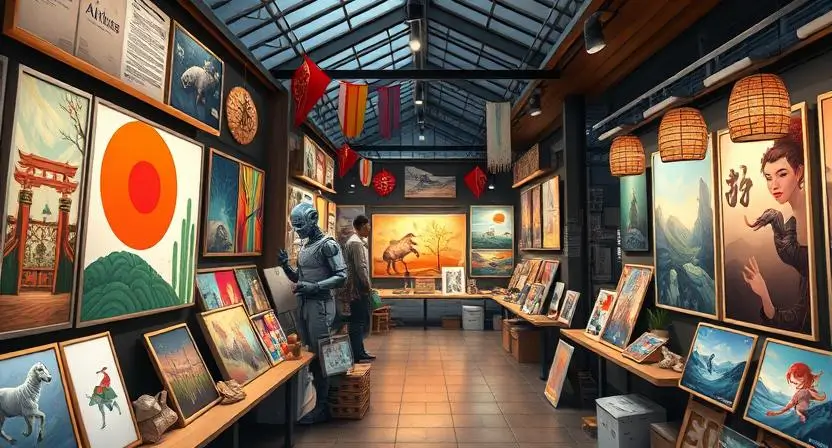
Emerging Trends in AI-Powered Art Creation
As AI continues to evolve, we can expect several emerging trends to shape the future of art creation. Niji AI will play a key role in these developments, driving innovation and pushing the boundaries of what is possible in the art world. Some of the trends to watch for include:
AI Art and Interactive Experiences:
AI-generated art will increasingly become part of interactive experiences. Artists and developers are already exploring ways to incorporate AI art into games, interactive installations, and digital exhibitions. This could lead to a new wave of interactive art, where the viewer’s actions or choices influence the artwork’s evolution in real-time.Generative Art for Fashion and Design:
The fashion and design industries are already exploring the potential of generative AI in creating unique patterns, clothing designs, and textures. Niji AI’s ability to generate high-quality designs could revolutionize these industries, allowing designers to quickly prototype new styles and experiment with fresh ideas.AI-Generated Music and Visual Art:
We are likely to see AI systems like Niji AI expand beyond visual art into the realm of music and sound design. Future versions of Niji AI may allow users to create not only visual artwork but also accompanying music, creating multimedia experiences where AI generates both the visuals and the soundscapes.Ethical Considerations and AI Art:
As AI art becomes more mainstream, there will be an increasing focus on ethical considerations, such as copyright, ownership, and the role of the artist. Artists, technologists, and lawmakers will need to address these issues to ensure a fair and transparent art market.
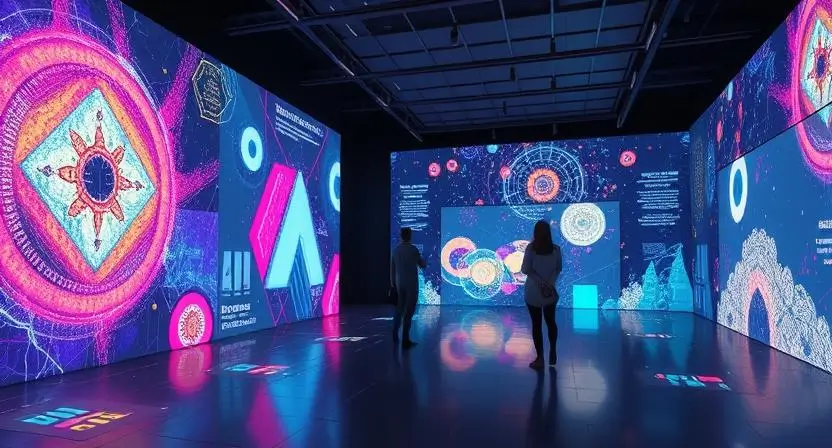
FAQ: Everything You Need to Know About Niji AI Art
As Niji AI Art continues to grow in popularity, many people have questions about how it works, its potential, and the impact it may have on the future of art creation. In this FAQ section, we’ll answer some of the most common questions regarding Niji AI Art and provide insights into its technology, uses, and the future of AI-generated art.
What is Niji AI Art?
Niji AI Art is a form of AI-generated artwork powered by advanced machine learning algorithms. It uses deep neural networks to analyze vast amounts of data, learning patterns, styles, and techniques from existing art to generate original pieces. Niji AI Art combines the creativity of traditional art with the computational power of artificial intelligence, offering artists a new tool to create visually stunning and unique artwork.

How Does Niji AI Create Art?
Niji AI creates art by training on a large dataset of images, including different styles, color palettes, and artistic techniques. Using a generative adversarial network (GAN) or other machine learning methods, the AI learns how to produce images that resemble human-created artwork while maintaining originality. The process typically involves the following steps:
- Training on Data: Niji AI is fed thousands of images across various styles and genres.
- Analyzing Patterns: The AI identifies visual patterns, textures, and color schemes within the data.
- Generating Artwork: Based on learned patterns, the AI then creates new artwork by combining elements in unique ways, resulting in a piece that is both original and visually appealing.
What Are the Benefits of Using Niji AI Art for Artists?
Enhanced Creativity: Niji AI helps artists push creative boundaries by offering new ways to visualize concepts. The AI acts as a tool that complements human creativity, providing new inspiration and perspectives.
Time Efficiency: Artists can generate multiple drafts or variations of their work quickly, speeding up the creative process and allowing them to explore more options in less time.
Personalization: Niji AI can be tailored to an artist’s specific style and preferences, helping to create artwork that reflects the individual’s unique vision.
Accessibility: Niji AI tools make art creation accessible to individuals with no formal art training, allowing anyone to experiment with digital art creation.

What Are the Applications of Niji AI Art?
Niji AI Art can be used in various industries and creative fields. Some key applications include:
- Graphic Design: Graphic designers use Niji AI to create logos, advertisements, and social media graphics.
- Entertainment: AI art is gaining popularity in the entertainment industry, from video game design to concept art for movies and animations.
- Fashion Design: Fashion designers leverage Niji AI to create textile patterns, clothing designs, and other fashion-related artwork.
- Art Galleries: Many art galleries are beginning to feature AI-generated works, sparking debates about the role of AI in the art world.
Can Niji AI Art Replace Human Artists?
Niji AI Art is a tool that complements human creativity, not a replacement for human artists. While it can generate visually impressive pieces, the essence of art—emotional connection, expression, and storytelling—remains a distinctly human quality. Niji AI provides a platform for artists to explore new ideas, but human input and interpretation are still essential in creating meaningful, personal art.
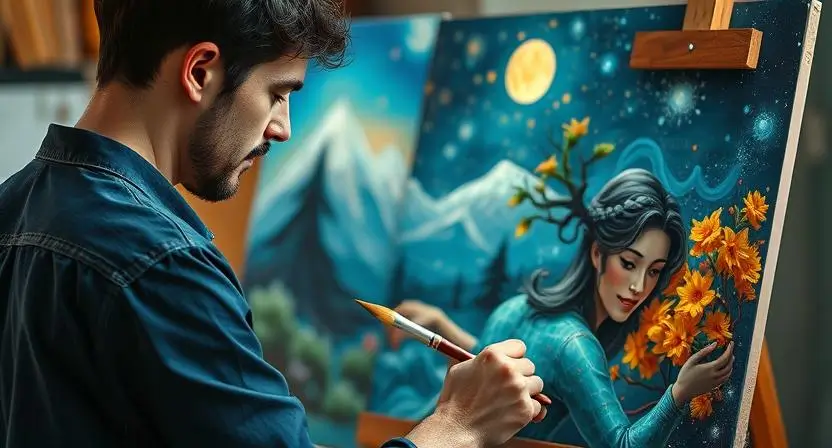
How Can Beginners Start Using Niji AI Art Tools?
For beginners, using Niji AI Art tools can be an exciting and rewarding experience. Here’s how you can get started:
- Choose the Right Platform: Several online platforms offer access to Niji AI tools. Some are free, while others may require a subscription.
- Select Your Style: Most Niji AI platforms allow you to select the style of artwork you want to create. This could range from abstract art to realistic portraits.
- Customize Your Inputs: Depending on the platform, you may be able to adjust parameters such as color, texture, and style, ensuring that the AI-generated art aligns with your vision.
- Refine Your Art: Once the AI generates an artwork, you can refine and edit the piece to suit your preferences, adding personal touches and making adjustments.
Conclusion:
In conclusion, Niji AI Art represents a transformative shift in the way we think about and create art. By combining advanced AI technology with human creativity, Niji AI provides artists with powerful tools to explore new artistic horizons, streamline their creative processes, and produce stunning, original works. Whether you are a seasoned artist or a beginner, Niji AI opens up endless possibilities for innovation and expression in the digital art space. As AI technology continues to evolve, it will undoubtedly play an increasingly significant role in the artistic landscape, influencing everything from graphic design to entertainment and beyond. The future of art is here, and with Niji AI Art, the boundaries of creativity are limited only by your imagination.

